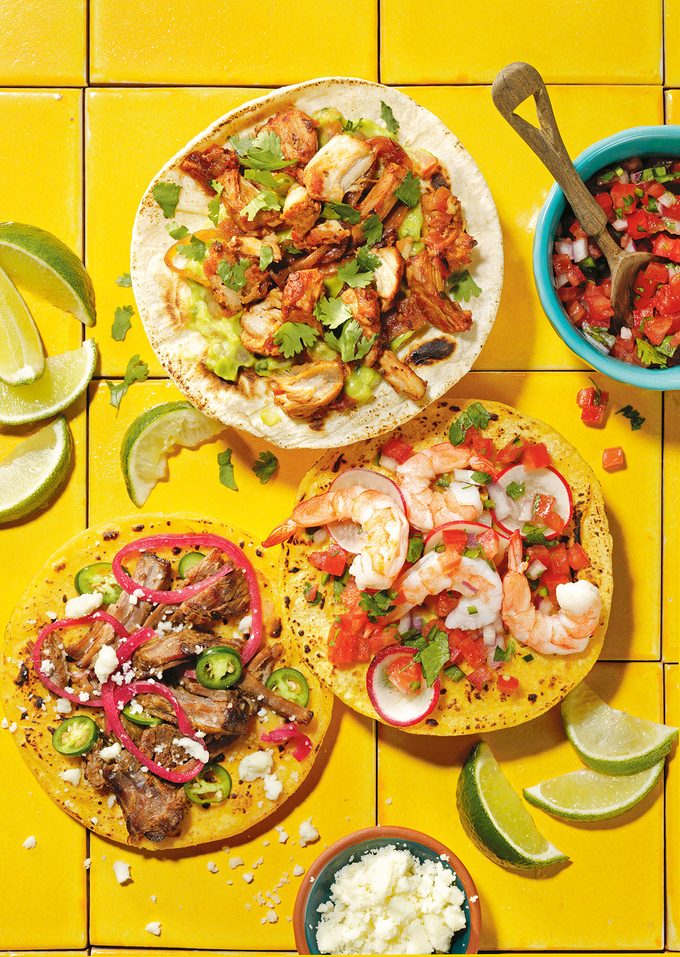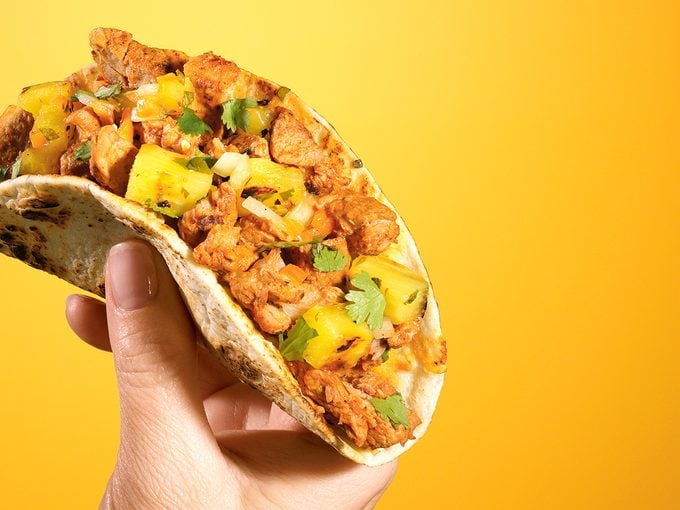How the Taco Became One of the World’s Favourite Hand-Held Foods
The delicious dish can be found just about everywhere, from barrios across Latin America to Mexican restaurants in many of the world’s major cities.

The Taco Origin Story
It’s believed the word “taco” comes from the Aztec tlahco, which means “half” or “in the middle.” According to Jeffrey Pilcher, author of Planet Taco: A Global History of Mexican Food (and a leading expert on the topic), the Aztec ruler Moctezuma II Xocoyotzin used tortillas prepared on hot stones as spoons to hold food.
But the modern moniker can be traced back to Mexican silver miners in the 18th century; taco was the word for the thin sheets of paper wrapped around the gunpowder used to excavate ore.
A working-class food in Mexico, tacos were brought to America when Mexican immigrants came to work in its mines and build its railroads. First mentioned in an American newspaper in 1905, the taco was an affordable item sold by street vendors in the Southwest.
The first taco-dedicated restaurant in the United States, El Cholo, opened in Los Angeles in 1923, but tacos didn’t become mainstream until Taco Bell started up in 1962. Its crispy-shell version, created for the Anglo palate, became widely popular, and the fast-food chain has since opened more than 7,000 locations in countries including Japan, Saudi Arabia and India. (It has no presence in Norway, but that could one day change, thanks to a Facebook campaign called “Get Taco Bell to Norway.”)
Authentic Mexican tacos use fresh tortillas made from ground corn or wheat, depending on the region. Though corn plays an integral role in Mexican culture the invading Spanish looked down on such native foods, which they associated with “heathen” deities. They favoured wheat, since it was linked with the Holy Eucharist.
As for the fillings? The many regional variations—from barbacoa (barbecued meat) to carne asada (steak) to nopal (cactus), to name only a few—have been influenced by history. The Spaniards, for example, introduced pigs, which led to Yucatán’s cochinita pibil (slow-cooked pork) taco. Head to Mexico’s Pacific coast and you’ll find tacos de pescado (fish tacos).

What about that delicious staple on any taco menu, tacos al pastor (“shepherd’s taco”), made with pork and pineapple? When Lebanese immigrants came to Mexico in the early 20th century, they brought their shawarma tradition and vertical rotisseries. The lamb they had used for gyros and kebabs was substituted with more widely available pork and pineapple.
Tacos are a messy, delicious creation. They may be stewed in tradition, but they can be whatever you want them to be. On Taco Tuesdays, North American families make them with store-bought crispy taco shells stuffed with ground beef, grated cheese and lettuce. The “taco night” practice has crossed the Atlantic to Scandinavia—except it’s on Fridays. In Sweden it’s called Tacofredag, and favourite toppings are yogourt sauces, pineapple, nuts and cucumber.
Clearly, the versatile taco can be filled to suit any palate.
Next, check out the hottest hot sauce you can buy.






